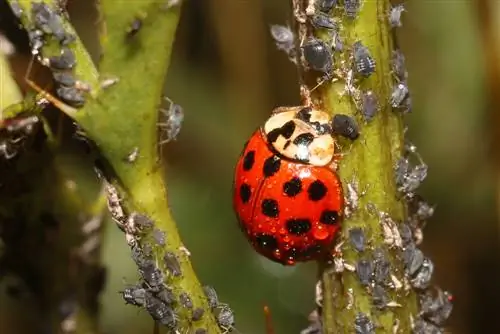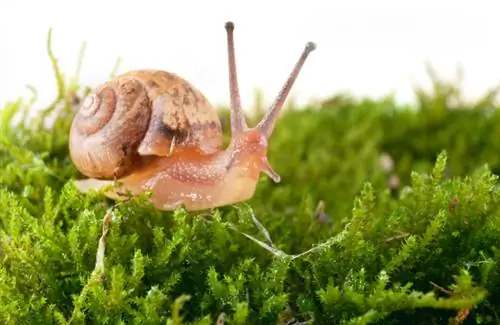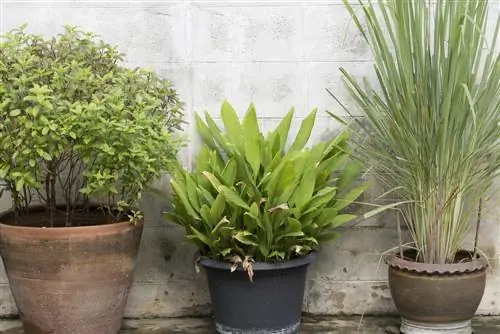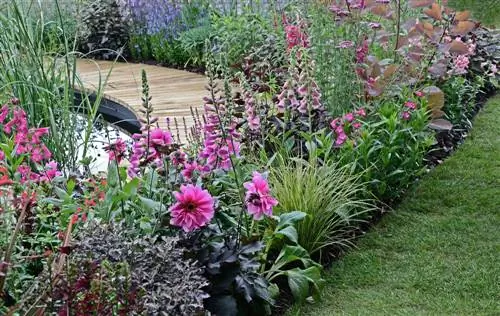- Author admin [email protected].
- Public 2023-12-16 16:46.
- Last modified 2025-01-23 11:22.
Pests make life difficult for many gardeners because they can severely weaken useful and ornamental plants. Take action against the small pests in the spring with ecologically compatible means, practice effective plant protection and protect beneficial insects. We have collected helpful methods for you in this article.

How can I control pests in the garden ecologically?
To control pests in the garden ecologically, use beneficial insects, use ecologically compatible slug pellets, fight lice with a water jet, pay attention to crop rotation, use nematodes against black weevils and use glue rings against butterfly caterpillars.
Snails
Slugs are among the pests that cause the most damage in the garden. Promoting beneficial insects such as toads, hedgehogs and birds is a first step in the fight against reptiles. You can specifically use runner ducks or the tiger snail, a slug with a tabby pattern. A snail fence that the slimy crawlers cannot overcome also makes sense, If the slugs attack the plants in large numbers every year, you should collect as many animals as possible in the spring and release them back into the wild. If this is not enough, you can apply sparingly dosed slug pellets (€9.00 on Amazon) as early as April and decimate the first generation. Make sure that it is an ecologically compatible product.
Lice
Aphid colonies that suck on the shoots that have just been knocked out can damage ornamental and crop plants so badly that they subsequently die. The animals can be easily controlled with a sharp jet of water. Aim it precisely at the colonies so that the lice are washed away. Since the animals are unable to walk, they can no longer reach their food source. Then cut off any wilted shoot tips.
Nematodes
Nematodes appear in the garden as both a pest and a beneficial insect. Harmful nematodes prefer to nest in the root area of fruit and vegetable plants. The following methods help against them:
- Prevent crop rotation.
- Dig up affected plants immediately and dispose of them in organic or household waste.
- Do not add it to the compost under any circumstances, as the nematodes are not reliably destroyed here, even in the warmer climate.
- Green manure with nematode-resistant mustards or marigolds can reduce the number of nematodes in the soil.
Black weevil beetle
The adult beetle eats small corners in the leaves of plants. However, this does not pose a danger to the plants. The larvae of the pest, which live in the root area, are more unpleasant.
Combat these in April with nematodes of the genus Heterohabditis. Alternatively, you can dig in neem press cake around the plants.
Butterfly caterpillars
Frost moths and boxwood moths cause significant damage to trees and bushes. These can be so massive that the plant subsequently dies.
- Glue rings that you attach to the trunk help against frost moth.
- Neem preparations that are gentle on beneficial insects are also suitable for combating them.
- There is currently no absolutely effective preparation against the newly introduced boxwood moth.
- It can be helpful to spray the boxwoods with a high-pressure cleaner.
- Alternatively, you can cover the box with a black bag for a while. This causes the temperature in the bush to rise and the larvae die relatively reliably.
Tip
Onion or garlic tea is a good remedy against fungal diseases. Pour five liters of boiling water over about 50 grams of chopped onion or garlic and let the broth steep for about three hours. Spray the plants daily for ten to fourteen days.






